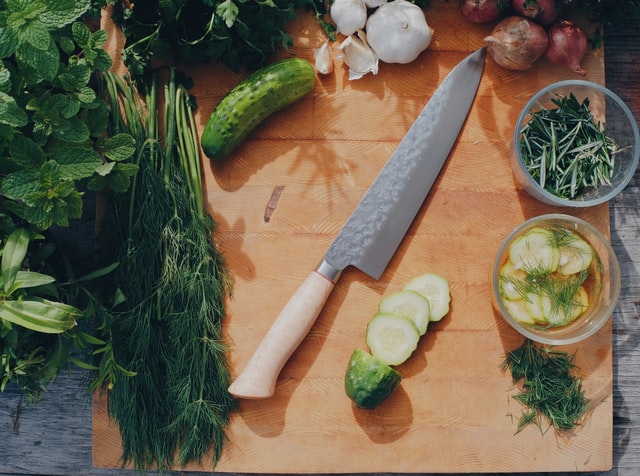
Let’s say you’ve made an amazingly beautiful chef knife. Perhaps you cut the rough shape out with an angle grinder, then ground a more accurate shape with a belt sander, before setting the edge and grinding the bevel on something like a 2×72 belt sander, before heat treating, tempering, and fitting your handle. Great!
But roll on a few months and how sharp is that knife now?
Read on to discover how to sharpen and hone your knife, without having to fire up the 2×72 belt grinder beastie!
Every few months, you’ll notice that your chef’s knife is having difficulty producing perfectly thin slices and precise dices. You may even notice that your knifework is slipping—literally. A dull knife, aside from being inconvenient to use, can be extremely dangerous. To keep your fingers (and your dinner) in good shape, learn how to sharpen a kitchen knife with a whetstone or sharpener, and how to maintain that edge with a steel rod.
What Is the Distinction Between Sharpening and Honing?
You’ve probably seen someone “sharpen” a knife with an honing rod. However, the steel rod does not sharpen your knife; rather, it straightens out the cutting edge of the blade to allow for smoother, safer cuts. Sharpening your knife, on the other hand, does just that. So, yes, you must do both. Hone your knife weekly—or whenever you use it, if you prefer—and sharpen it every few months, or at least once a year (depending on how often you use it and how quickly you notice dulling that honing doesn’t really improve).
Sharpening knives with a Whetstone
A whetstone—a rectangular block that works almost like sandpaper, helping to straighten and refine the cutting edge on the blade as you slide the knife across it—is our favourite way to sharpen a blade. Most whetstones are designed to be soaked in water before use, so make sure to follow the manufacturer’s instructions. (Fun fact: Whetstones aren’t named after the fact that they’re mostly used wet—”whet” is simply an old word for “sharpen”).
If your whetstone needs to be soaked, soak it in water for 5 to 10 minutes, or until it’s completely saturated and there are no bubbles coming out of it. Hold the knife at a 20-degree angle against the whetstone and gently drag each side of the knife against it a few times. Most whetstones have a “coarse-grind side” and a “fine-grind side”—start with the coarse side if your knife is particularly dull, then switch to the fine-grind side.
If you sharpen and hone your knife on a regular basis, you can skip to the fine-grind side. If the whetstone appears to be drying out as you use it, simply rub some more water on it and keep going.
Sharpening Knives with a Knife Sharpener
This tool is a quick fix for a dull knife—just press the blade into the coarse side, pull it in towards you a few times, and then move on to the fine side. Learning how to use a knife sharpener can be useful in a pinch, but it is not the best solution.
The real concern is that these sharpening tools may be harmful to your knife—so use this method for sharpening less expensive knives and a whetstone for sharpening your fancy Japanese chef’s knife.
How to Keep a Knife Edge Sharp with Honing
After sharpening your knife, use an honing steel on a weekly basis to keep the edge perfectly straight (don’t worry about damaging your blade with frequent honing—the process doesn’t wear down your knife like sharpening does).
Hold an honing steel vertically, with the tip resting on a work surface and the handle gripped firmly in one hand, rather than making a show of holding the steel in the air and dramatically sliding the knife against it. Working at a 15-20 degree angle, press the bottom of the knife’s blade (the thickest part) against the honing steel and pull the knife down and towards you. Continue until you reach the tip of the blade. Repeat the motion on the other side of the steel, reversing the angle of the blade against the honing steel while holding the knife in the same hand.
Keep ’em safe.
After you’ve gone to the trouble of sharpening and honing your knives, make sure you store them properly so they last longer. We’ve got plenty of storage ideas, from knife blocks to wall strips and drawer docks, to ensure your sharpening efforts don’t go to waste.